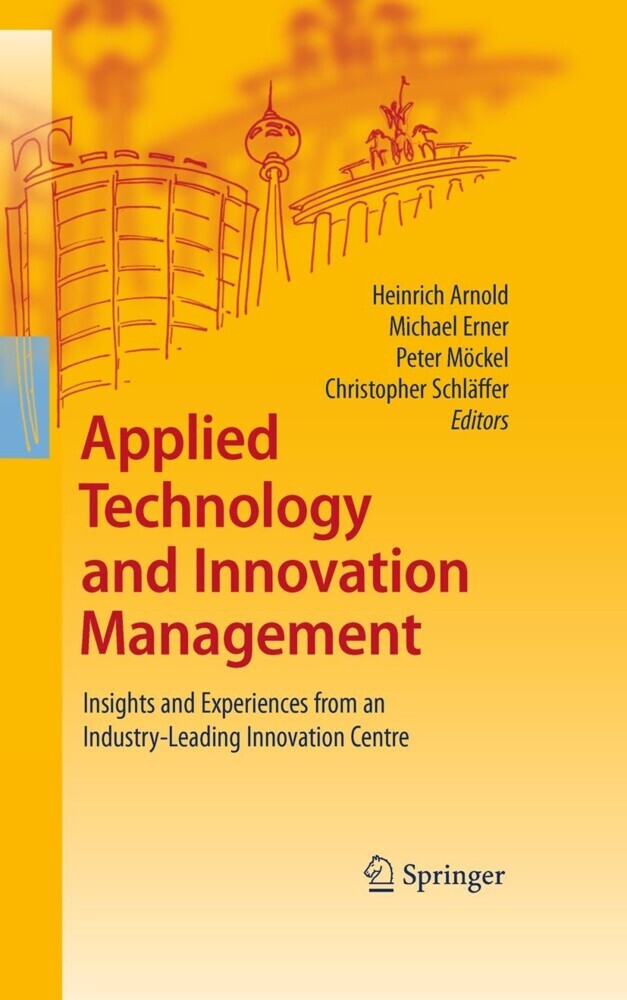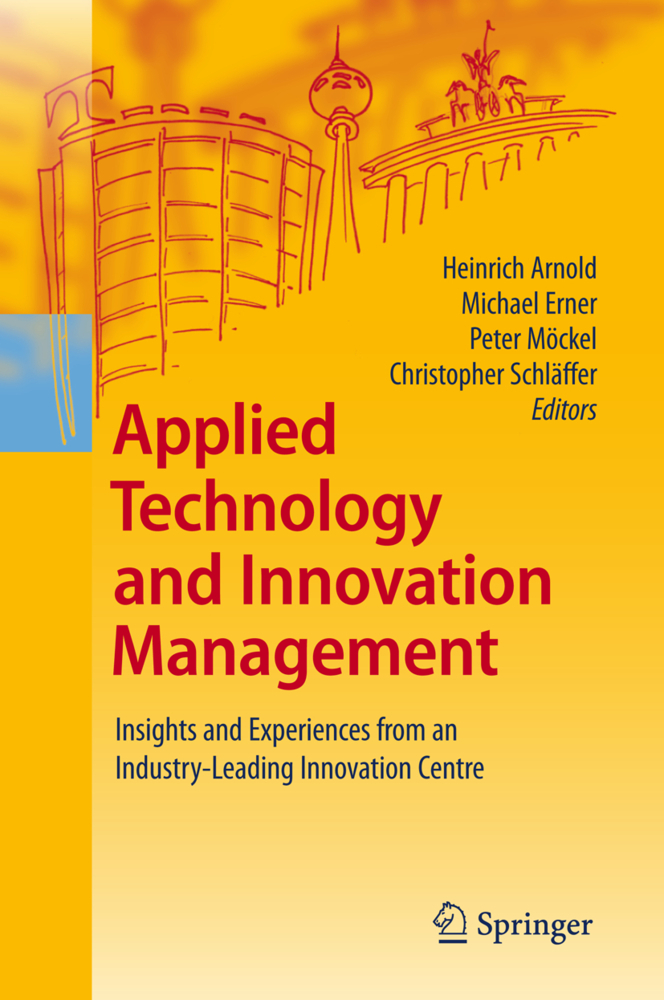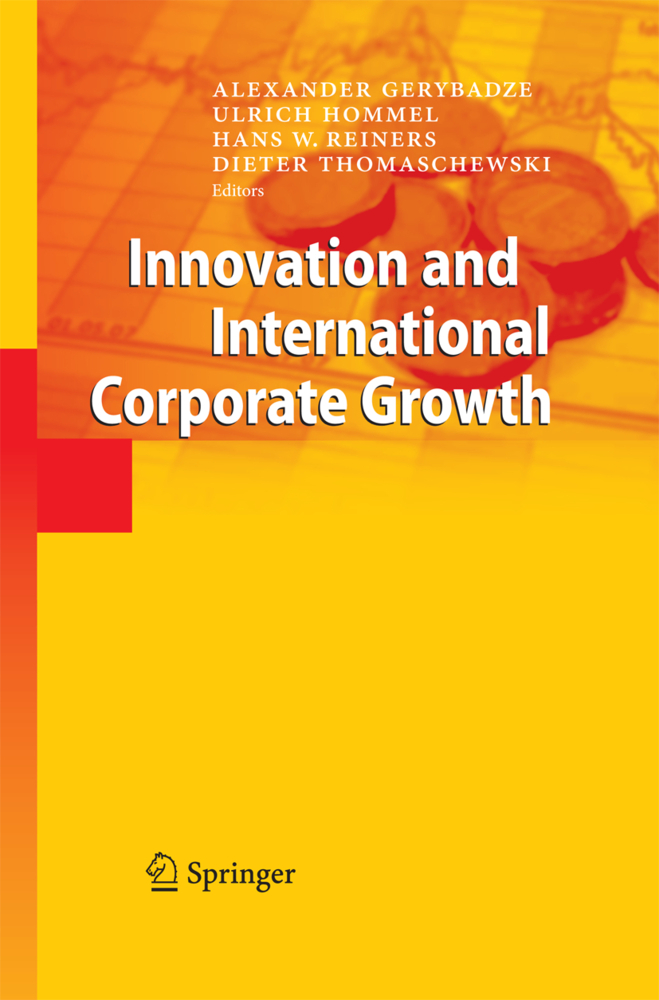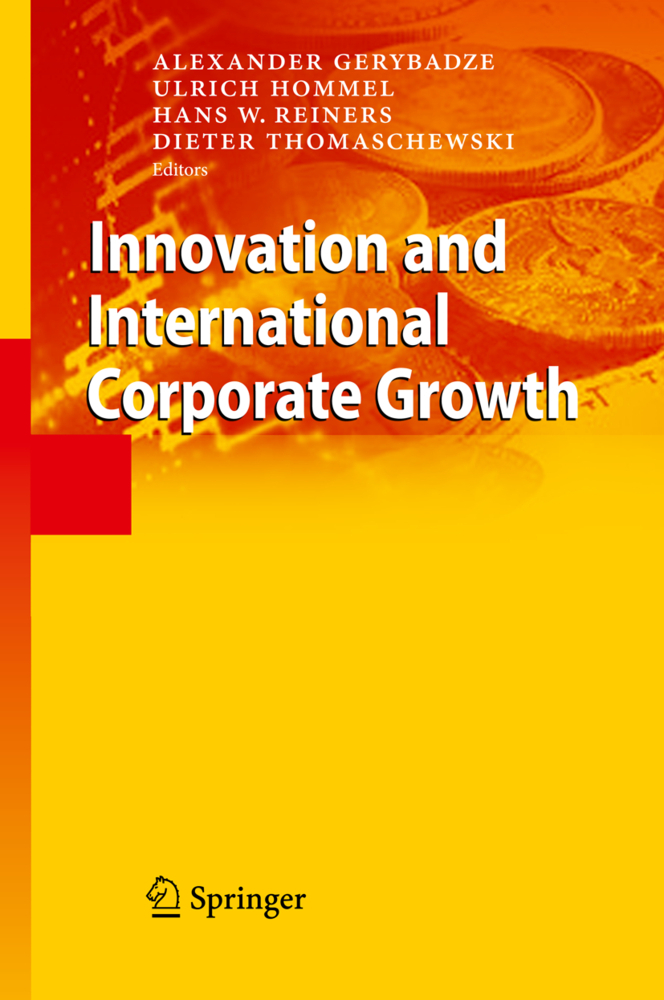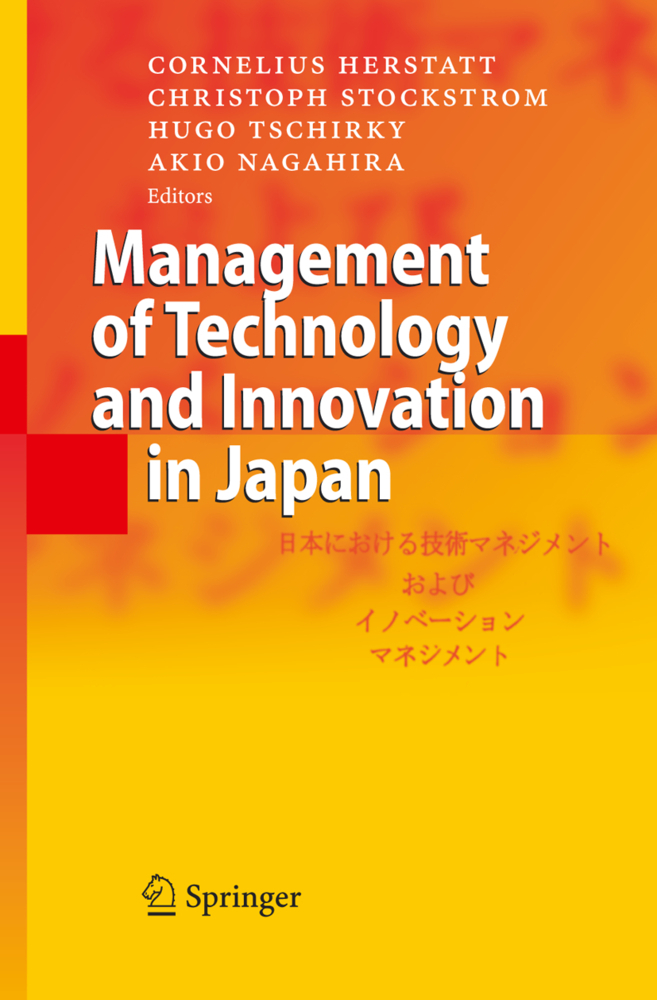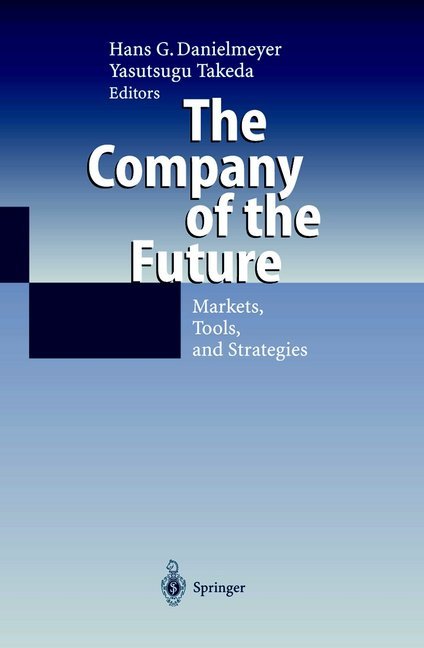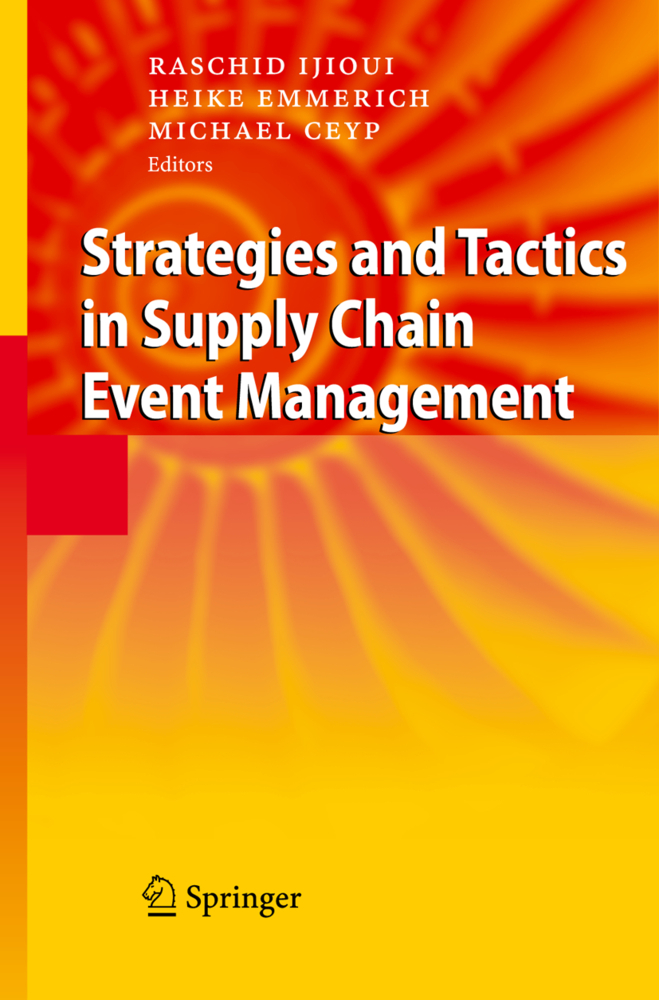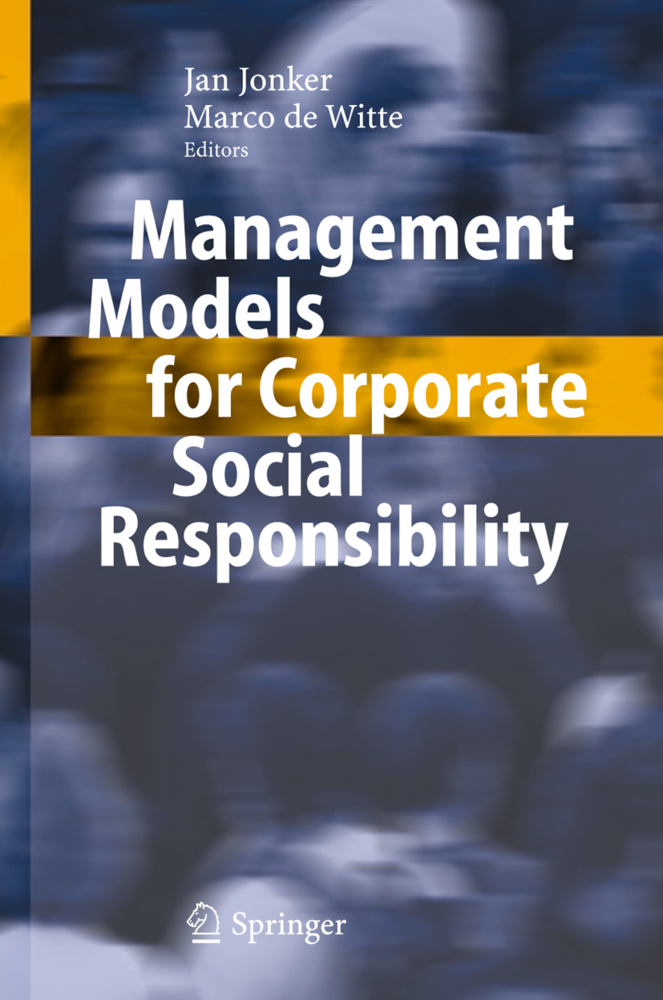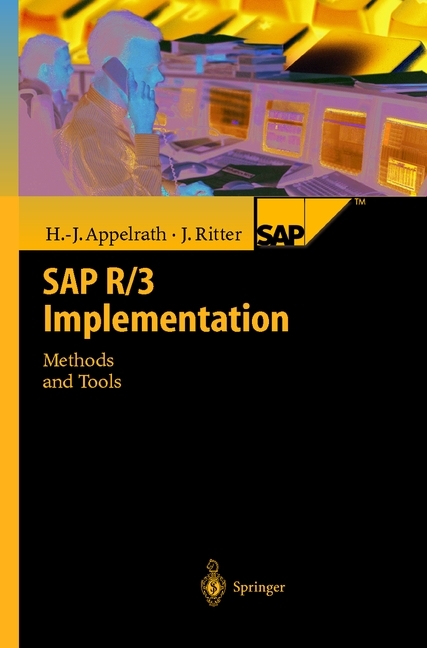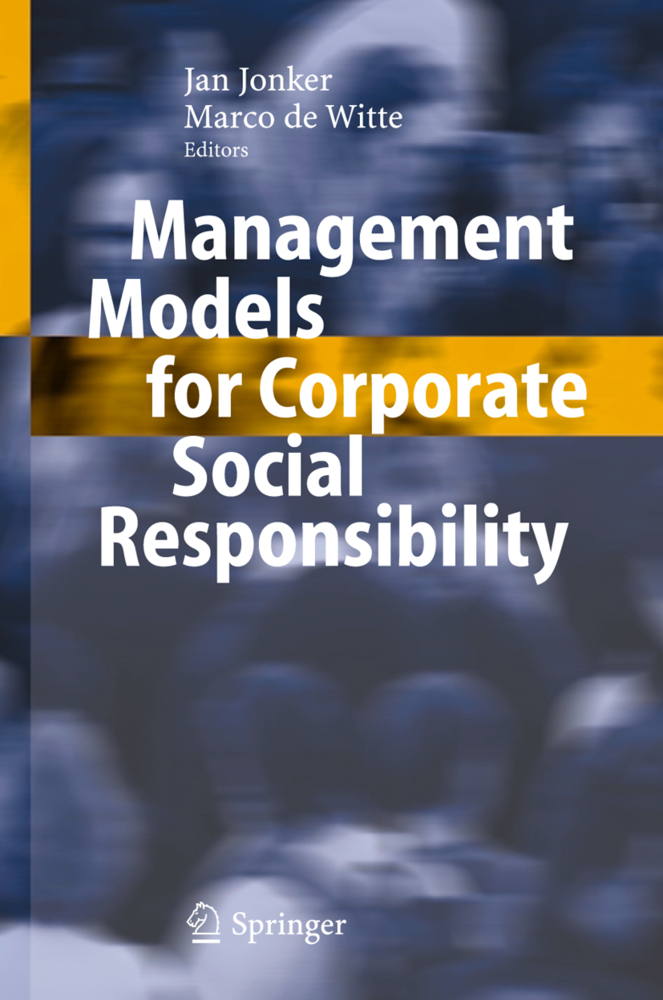Applied Technology and Innovation Management
Insights and Experiences from an Industry-Leading Innovation Centre
Rapid application of new technologies and highly leveraged innovation processes are key for the success of companies and organizations in dynamic markets. Based on the experiences of one of the industry's most modern innovation centers this book provides an insight into the tools and methods used to align customer requirements, competitive challenges and technological development. Both, scientists and practitioners, will benefit from the lessons learned and presented in this volume.
1;Table of Contents;5 2;List of abbreviations;6 3;The Importance of Innovation Management at Deutsche Telekom - Technological Uncertainty and Open Innovation;8 4;Deutsche Telekom Laboratories as a Testbed for Modern Technology and Innovation Management;12 4.1;References;17 4.2;Endnotes;18 5;Strategic Foresight;19 5.1;Introduction;20 5.2;Continuous foresight;21 5.2.1;Customer foresight;22 5.2.2;Technology and competitor foresight;24 5.3;Project-based foresight with strategic roadmapping;27 5.3.1;Environmental analysis;27 5.3.2;Scenario development;28 5.3.3;Roadmap development;28 5.3.4;Navigation board development;29 5.4;Conclusion;29 5.5;References;30 5.6;Endnotes;31 6;Integration of Academic Research into Innovation Projects: The Case of Collaboration with a University Research Institute;32 6.1;Introduction;33 6.2;Linking academic research to the firm's R&D chain for innovation projects;33 6.3;The case of a network security innovation project;36 6.3.1;The research challenge;36 6.3.2;Related work and evidence for the use case;36 6.3.3;Theory of the challenge;37 6.3.4;Solution and implementation;37 6.4;Discussion of the use case and the innovation process;39 6.5;Conclusion;40 6.6;References;42 7;Implementing Open Innovation to Benefit from External Dynamics of Innovation;43 7.1;Introduction;44 7.2;Actors of the open innovation ecosystem;45 7.2.1;Development partners and competitors;46 7.2.2;Research institutions;47 7.2.3;Customers and markets;47 7.3;Organizational design and implementation of the open innovation paradigm;48 7.3.1;Structural organization;48 7.3.2;Process organization;50 7.3.3;Cultural aspects of the organization;51 7.4;Conclusion;52 7.5;References;53 8;Partnering for Research and Development within an Open Innovation Framework;55 8.1;Introduction;56 8.2;Cooperation models;57 8.2.1;Industrial collaboration;57 8.2.2;Subcontracting;59 8.3;Pre-competitive collaboration;61 8.3.1;Innovation clusters;61 8.3.2;Regional cluster of Berlin;62 8.3.3;The European Center for Information and Communication Technologies;62 8.4;Conclusion;64 8.5;References;64 9;Business (Lead) Customer Involvement in the Innovation Process;66 9.1;Introduction;67 9.2;Involving corporate partners as an element of open innovation;67 9.3;General requirements for innovation involvement;71 9.4;Business-customer process involvement;74 9.5;Conclusion;76 9.6;References;77 10;Tools for User-Driven Innovation at Deutsche Telekom Laboratories;79 10.1;Introduction;80 10.2;Theoretical foundations;80 10.2.1;Innovation and innovation phases;80 10.2.2;Customer research and the limits of traditional tools;82 10.3;User-driven innovation at Deutsche Telekom Laboratories;84 10.3.1;Use case: interactive mobile TV;84 10.3.2;User-driven innovation for interactive mobile TV;85 10.3.2.1;First Phase: Exploration;86 10.3.2.2;Second Phase: ideation;88 10.3.2.3;Third phase: selection/execution;89 10.3.2.4;Fourth Phase: Commercialization;91 10.4;Conclusion;92 10.5;References;93 11;Options for Customer Integration in the Open Innovation Paradigm at Deutsche Telekom;96 11.1;Introduction;97 11.1.1;Need and prerequisites for open innovation in the telecommunications industry;97 11.2;Open innovation through customer integration at Deutsche Telekom;98 11.2.1;Lead user method;98 11.2.2;Ideas competition;100 11.2.3;Virtual communities;102 11.2.4;Toolkits for innovation;103 11.3;Conclusion;105 11.4;References;105 12;Segmentation and Evaluation Tools to Project Customer Potential;107 12.1;Introduction;108 12.1.1;Heterogeneous consumer needs in a rapidly changing market;108 12.1.2;Indications for future product success in the early phases of innovation;109 12.2;Social milieus as a basis for customer segmentation;110 12.2.1;The origin of social milieus and their implications for market segmentation;110 12.2.2;Quantifying the qualitative: inherent challenges when using milieu theory and market studies in the process of new product development;111 12.2.3;Projecting customer potential by usin
| ISBN | 9783540888277 |
|---|---|
| Artikelnummer | 9783540888277 |
| Medientyp | E-Book - PDF |
| Auflage | 2. Aufl. |
| Copyrightjahr | 2009 |
| Verlag | Springer-Verlag |
| Umfang | 218 Seiten |
| Sprache | Englisch |
| Kopierschutz | Digitales Wasserzeichen |

